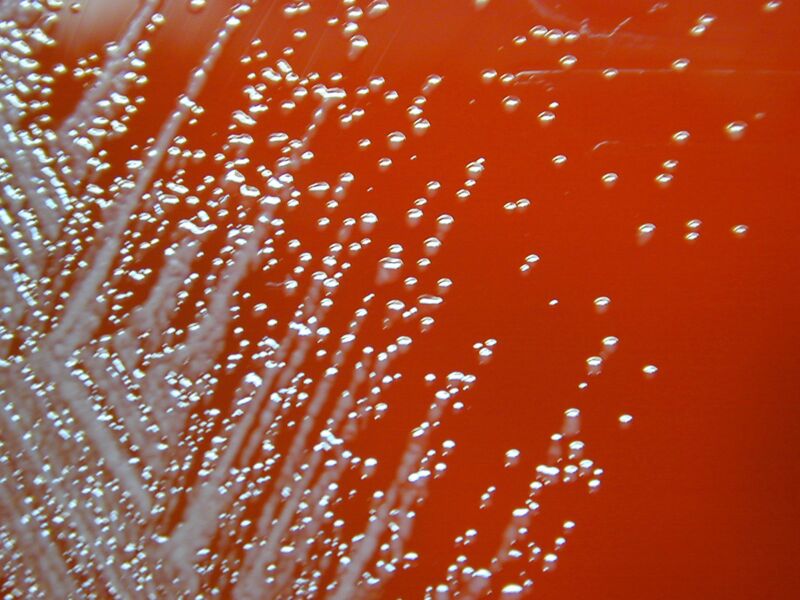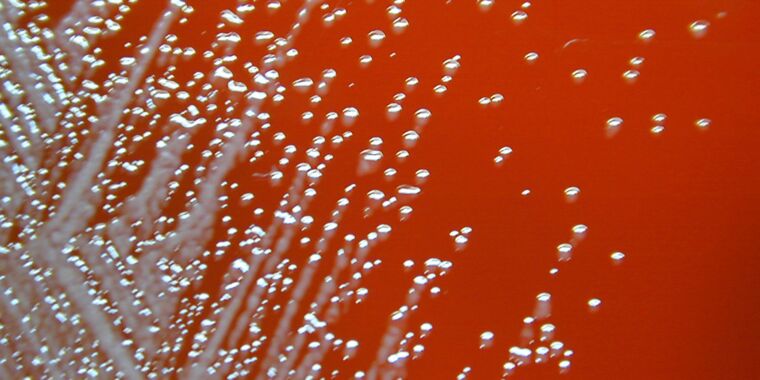
For years, health officials in the US noted sporadic, mysterious cases of a foreign bacterial infection, called melioidosis. The infection—which is difficult to diagnose, tricky to treat, and often deadly—was thought to only strike travelers or those who came in contact with contaminated imported goods or animals. Yet, now and then, an American would inexplicably fall ill—no recent travel, no clear links.
Now, health officials have a definitive explanation. And it confirms a dreaded, long-held suspicion: The deadly bacterium is foreign no more. Rather, it’s a permanent US resident entrenched in American soil.
Three samples taken from soil and puddle water in the Gulf Coast region of southern Mississippi tested positive for the bacterium, officials from the Centers for Disease Control and Prevention announced Wednesday. The sampling was part of an investigation into two mysterious cases in the area that occurred in 2020 and 2022. The positive test results mark the first time that investigators have caught the deadly germ in US environmental samples, though they’ve been looking for it for years.
It’s unclear how long the bacterium has resided in the US or how widespread its distribution has become. But CDC modeling suggests the environmental conditions of the Gulf Coast states are conducive to the bacterium’s growth. The agency has called for extensive environmental sampling.
While the finding explains the puzzling cases, the most important thing now is for health officials to get the word out. This is no longer a traveler’s disease. In a health advisory released yesterday, the CDC emphasized that its notice “serves to alert clinicians and public health officials throughout the country to consider melioidosis in patients whose clinical presentation is compatible with signs and symptoms of the disease, regardless of travel history to international disease-endemic regions, as melioidosis is now considered to be locally endemic in areas of the Gulf Coast region of Mississippi.”
New resident
The bacterium at hand is Burkholderia pseudomallei, which lives in the soil and water of tropical and subtropical regions and causes rare but dangerous sporadic infections. The areas with the highest endemicity are in Southeast Asia and northern Australia, but it has also popped up in areas of Southwest Asia, Africa, the Pacific, and the Americas, such as Peru, Brazil, Haiti, and some US territories, including Puerto Rico.
B. pseudomallei causes melioidosis by transmitting in various ways, all involving direct contact with contaminated soil and water. People can be infected if they ingest contaminated soil, water, or food; if they breathe in contaminated dust or water droplets; or if contaminated soil or water comes in contact with a break in the skin. The people more at risk of melioidosis than others are those with specific conditions, such as diabetes, heavy alcohol use, chronic lung disease, chronic kidney disease, and conditions that weaken immune responses. One bit of good news is that the infection rarely transmits from person to person.
The ensuing symptoms of melioidosis can depend on which route B. pseudomallei takes into the body. If it enters through a skin wound, it could cause pain, swelling, and an abscess. If it gets into the blood, it can cause joint pain, abdominal discomfort, and disorientation. If it enters through the lung, it can cause coughing and chest pain. And if it goes systemic, it can cause weight loss, a brain infection, and seizures. Overall, the symptoms can appear nebulous and can easily be mistaken for other conditions. It’s been described as “the great mimicker” because of how frequently and easily it is mistaken for other serious infections, such as tuberculosis.
Its indistinct nature contributes to its deadliness. B. pseudomallei is naturally resistant to many commonly used antibiotics. Any delays to an accurate diagnosis can allow the bacterium to cause more severe disease. According to the CDC, melioidosis is fatal in 90 percent of people who are not properly treated. When people are treated with the correct antibiotics, the fatality rate falls below 40 percent. And if patients have access to intensive care and the right drugs, the fatality rate drops to around 20 percent.
For all these reasons, the US government considers B. pseudomallei a bioterrorism threat, listing it as a Tier 1 Select Agent along with anthrax bacteria (Bacillus cereus Biovar anthracis) and Ebola virus.
US cases
According to the CDC, the US averages about 12 melioidosis cases per year, most of which have been travel-related. But there have been notable and puzzling exceptions over the years.
Last year, melioidosis made headlines when four people in four states became infected with the same strain of B. pseudomallei. The first unexplained cases, which was fatal, occurred in an adult in Kansas in March. Then, another adult in Minnesota survived, and a 4-year-old in Texas was left with brain damage. Last, a child in Georgia was identified as a case through a post-mortem exam.
In October, investigators announced a break in the puzzling outbreak: the strain of B. pseudomallei causing the infections was found in an aromatherapy room spray, made in India, which contained “gemstones.” Specifically, it was the Better Homes & Gardens Lavender & Chamomile Essential Oil Infused Aromatherapy Room Spray with Gemstones, which Walmart sold.
Though investigators suspected an imported product from the start, the cluster drew attention to other puzzling cases in the US—cases that had raised concern that B. pseudomallei was lurking in US soil. In 2015, for instance, researchers at the CDC surveyed the 34 human melioidosis cases in the US between 2008 and 2013, finding that cases appeared to be increasing each year in that period. The study, published in the CDC’s Morbidity and Mortality Weekly Report, concluded that B. pseudomallei may be an emerging infectious disease in the US.
“Of note, three cases of melioidosis occurred in US residents with no travel history either outside of the United States or to regions where melioidosis is endemic, possibly indicating unrecognized sources of exposure in the United States,” the researchers wrote. “Therefore, being aware that this infection can be seen in persons without an obvious history of travel to locations where B. pseudomallei is endemic is important.”
The cautionary note came up again in a case report published in 2020, also written by CDC researchers and published in the journal Emerging Infectious Diseases. The report documented a puzzling case of melioidosis from 2018 in a 63-year-old man from Atascosa County, Texas—which is in the Gulf Coast region. The man had no relevant travel history, only reporting a trip to Mexico taken 30 years before his illness.








